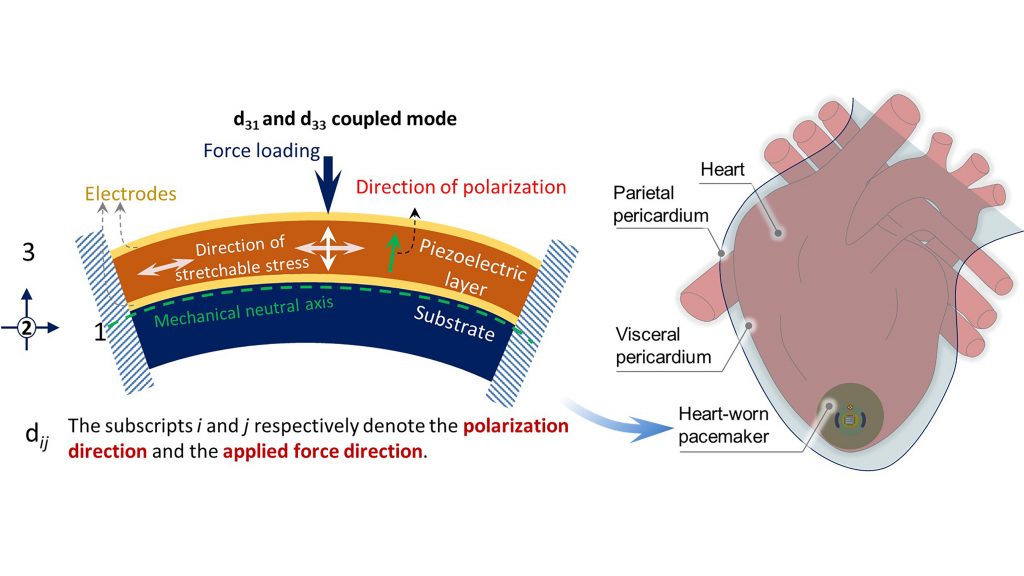MELVILLE, N.Y., August 4, 2021 — The cardiac pacemaker of the future could be powered by the heart itself, according to researchers at Shanghai Jiao Tong University.
During the AIP Publishing Horizons — Energy Storage and Conversion virtual conference, which will be held Aug. 4-6, Yi Zhiran, from Shanghai Jiao Tong University, will present research on a way for a batteryless pacemaker to harvest kinetic energy from the heart to power the lifesaving device. The presentation, “Mechanism on Buckled Piezoelectric Energy Harvesting for Batteryless Heartworn Pacemaker,” will be available during the three-day conference.

Current cardiac pacemakers use a battery power supply and leads to keep hearts beating regularly. Yi and his group are investing batteryless powering and leadless pacing, but the challenge has been to obtain sufficient power by scavenging heart kinetic energy.
“If the practical force of the heart is 0.5 newtons, the output power should be about 192 microwatts,” Yi said. “Therefore, for the commercial pacemaker, just about no less than 10 microwatts is sufficient for its normal work.”
The energy is harvested by the buckling of the encapsulated structure of the pacemaker, creating buckled piezoelectric energy. This method of power supply varies greatly from current pacemaker designs.
“The key difference is the method of the power supply,” Yi said. “Current paradigm mainly relies on the battery, which limits the development of many implantable biomedical devices. But a batteryless pacemaker is feasible through using implantable energy harvesting technology, which provides a sustainable power supply method.”
Yi said the batteryless pacemaker is in the feasible verification phase. He said his group is working hard to overcome some drawbacks to the device, such as the long-term stability in vivo, the implanting method, and the integration between the rigid pacing chip and the flexible energy harvesting unit, before progressing to the next steps.
“The first research plan is to achieve the integration of the flexible pacing circuit and the energy harvesting unit. Then, we will carry out the verification of long-term stability in vivo.”
###
For more information:
Larry Frum
media@aip.org
301-209-3090
